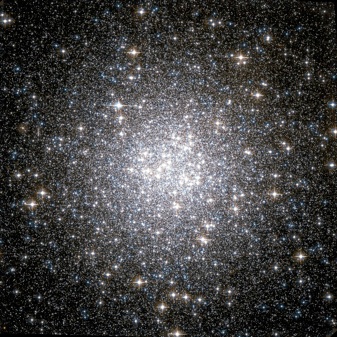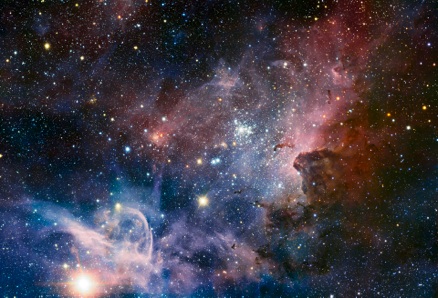Stars form in groups, which themselves come in a variety of different types. Star clusters are generally groups of stars which are gravitationally bound, meaning that, although the stars are moving around, their collective gravitational field is strong enough to keep the group together. Star clusters can, in principle, live for a very long time.
A well-known type of cluster is a globular cluster, en example of which is shown to the right. Globular clusters are approximately spherical, dense, can contain tens of thousands to tens of millions of stars, and are very old, often more than ten billion years. They are usually to be found orbiting far from the centres of their host galaxies, in the galaxies’ halos.
Open clusters are smaller, younger and more common than globular clusters and are found in large numbers inside galactic disks. They likely do not survive for long. Since they live in galactic disks, they experience close encounters with giant molecular clouds or galactic spiral arms, whose gravitational fields are likely to disrupt the clusters.
OB associations are not strictly clusters - ‘clusters’ generally denotes groups of stars which are gravitationally-bound. OB associations are unbound groups of 10s-100s of massive, bright OB-type stars (with an additional retinue of 1000’s-10 000’s of low-mass stars) which are unbound. OB associations are expanding and will gradually dissolve as their member stars either die off or detach themselves from the associations’ feeble gravitational pulls and wander the Galaxy alone.
An example is shown to the right, the Carina OB1 association. Star formation in this region may well still be in progress, as there are large quantities of gas visible surrounding the group of bright massive stars.
An interesting and relatively recently discovered class of cluster are the so-called Super Star Clusters (SSCs). These are as massive and dense as globular clusters, or even more so, but are very young. Their youth means that their complement of massive stars are mostly still alive, making SSCs very bright and visible from great distances.



